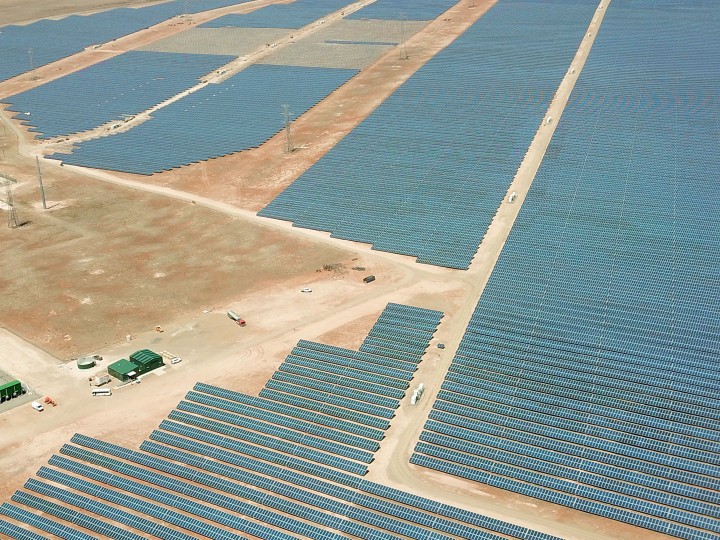After unveiling plans for the Renewables 400 auction two years ago, the Queensland government announced on Wednesday 10 projects competing for contracts with state-owned renewable energy corporation CleanCo. Queensland’s third publicly-owned electricity generator would commence trading in the national electricity market on 31 October, and encourage up to 400 MW of new generation and storage.
The 10 shortlisted projects total 2,190 MW of wind and solar capacity, including 555 MW of PV, and a number of big batteries:
- Acciona Australia – the 540 MW MacIntyre Wind Farm
- Edify Energy – the 200 MW Majors Creek Solar Farm + storage, unspecified capacity
- First Solar Australia – the 100 MW Chinchilla Solar Farm + storage, unspecified capacity
- Goldwind Australia – the 800 MW Clarke Creek Wind Farm + storage, unspecified capacity
- Infigen Energy – the 65 MW Forsayth Integrated Facility (wind + storage, unspecified capacity)
- Lyon Infrastructure Investment – Cape York Solar Storage (55 MW solar + 20MW/80MWh storage)
- Neoen Australia – the 100 MW Kaban Green Power Hub (wind + 100 MW storage)
- Pacific Hydro Australia Developments – the 100 MW Haughton Solar Farm + storage, unspecified capacity
- Vena Energy – the 100 MW Collinsville North Solar + storage, unspecified capacity
- Windlab – the 100 MW Lakeland Wind Farm
The Palaszczuk government unveiled its plan to restructure its two publicly-owned electricity generation companies into three, creating a strategic portfolio of low and zero emissions power generation assets designed to reduce power prices, known as CleanCo. After the commitment was unveiled in June 2017 as part of the Powering Queensland’s Future plan, the CleanCo legislation was introduced to the state government in February.
From 31 October, CleanCo will take over the 570 MW Wivenhoe pumped storage hydro station, the 385 MW gas-fired Swanbank E power station and the Kareeya, Barron Gorge and Koombooloomba hydro power stations from the state’s publicly-owned generators, Stanwell and CS Energy. These projects will constitute CleanCo’s foundation generation assets.
After it attracted more than 15 GW of capacity, the reverse auction application process closed two year ago. CleanCo will now seek binding bids from 10 proponents and recommend projects to the government early next year.
“This will increase competition and supply in the Queensland electricity market, putting more downward pressure on electricity prices for Queenslanders,” Energy Minister Dr Anthony Lynham said. “There’ll be more new jobs building these projects in regional Queensland and the extra generation will also make our power supply even more reliable.”
According to Lynham, preliminary analysis indicates CleanCo should reduce wholesale electricity prices on average by around $7 per MWh, which is expected to translate to an estimated $70 per annum saving for the average Queensland household. On top of this, CleanCo will take Queensland one step closer to its target of 50% renewable energy by 2030.
The Minister also used the announcement to underline the Liberal National Party had refused to support the program. “Going by their track-record in government, when not one large scale renewable energy project was built, there’s no doubt they’ll see CleanCo as another Queensland-owned energy asset to sell,” he said.
Reverse auction bonanza
In reaction to the announcement, the Clean Energy Council (CEC) said the Renewables 400 initiative will give the state a much-needed certainty for projects that will create jobs and investment in regional parts of the state, as well as provide clean energy to the state’s electricity system and reducing the cost of power for residents and businesses.
“Reverse auction programs have proven extremely successful in the ACT and Victoria in helping the industry scale up and reduce the cost of building wind and solar projects in Australia,” CEC Chief Executive Kane Thornton said. “They encourage developers to out-bid each other to deliver the lowest possible price, meaning the Queensland Government will get the best possible value for any money it allocates towards supporting clean energy projects across the Sunshine State.”
According to Thornton, these kinds of programs in other states have helped the industry to identify efficiencies and increase competition to a point which is helping consumers reap the benefits of cheaper electricity. “Queensland absolutely has the potential to be a national leader in renewable energy, though challenges remain with grid congestion and connection,” he added.
This content is protected by copyright and may not be reused. If you want to cooperate with us and would like to reuse some of our content, please contact: editors@pv-magazine.com.









By submitting this form you agree to pv magazine using your data for the purposes of publishing your comment.
Your personal data will only be disclosed or otherwise transmitted to third parties for the purposes of spam filtering or if this is necessary for technical maintenance of the website. Any other transfer to third parties will not take place unless this is justified on the basis of applicable data protection regulations or if pv magazine is legally obliged to do so.
You may revoke this consent at any time with effect for the future, in which case your personal data will be deleted immediately. Otherwise, your data will be deleted if pv magazine has processed your request or the purpose of data storage is fulfilled.
Further information on data privacy can be found in our Data Protection Policy.